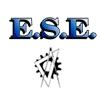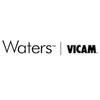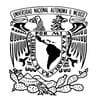Check out what is new in Animal Feed
Find the best technical articles, forums, and videos on Animal Feed at Engormix. Enter now and interact with the world's largest agricultural social network.
INTRODUCTION Due to its nutritional value, corn (Zea mays L.) is one of the main ingredients used in the diets for poultry worldwide. Brazil is one of the largest corn producer and exporter countries (USDA, 2021), and, according to ABIMILHO (2023), about 50% of the corn produced in Brazil in the 2019/2020 harvest was used for animal consumption, reaching more than 54% in the 2022/2023 harvest. The grain is globally traded as a commodity because it is a homogeneous product from which...
Comments : 0
Recommendations: 0
Extreme rains in northwest Iowa have caused instances of stored grain being covered with floodwater. According to current Food and Drug Administration policy, grain inundated by uncontrolled river or stream water is considered adulterated and must be destroyed. The current situation is one of river water flooding rather than of rain-driven pooled water in low ground, for which there are salvage options. River-based floodwaters can bring in many hazards and rapid spoilage. Flooding...
Comments : 0
Recommendations: 0
Recommended events
January 26, 2026
United States - Georgia - Atlanta
Background – what are aflatoxins and their impacts Aflatoxins are highly toxic compounds produced by certain strains of Aspergillus fungi, particularly A. flavus and A. parasiticus. These toxins, regulated at very low levels (parts per...
Comments : 0
Recommendations: 0
I. INTRODUCTION Necrotic enteritis (NE) is of great concern to the poultry industry due to its deteriorating impact on production and increasing mortality, resulting in a US$6 billion global economic loss (Wade and Keyburn, 2015). The causative agent of NE is Clostridium perfringens, a gram-positive spore-forming anaerobic bacterium. The subclinical form of NE is financially more devastating than the clinical form. This is due to a lack of obvious symptoms resulting in a delayed...
Comments : 0
Recommendations: 0
I. INTRODUCTION Microbial enzymes are now routinely used in broiler chicken diets to reduce the effects of antinutritive factors (ANF) in feed and/or improve the digestion of nutrients (Bedford, 2011). There is a suite of enzymes that target ANF such as non-starch polysaccharides (NSP) and phytic acid as well as products which improve the digestion of nutrients such as protein and minerals. The major cereals used in poultry diets are wheat, maize, sorghum and barley. The objective of...
Comments : 0
Recommendations: 0
In the world of animal feed manufacturing, some parameters shout: protein levels, energy values, additive profiles. Others whisper, quietly shaping performance from behind the scenes. Particle size is one of those silent drivers. And yet, for monogastric species like pigs and poultry, it can be the difference between optimal feed conversion and costly inefficiencies. I’ve spent over three decades in feed process technology, and if there’s one...
Comments : 0
Recommendations: 2
.jpg&w=3840&q=75)
Charles Starkey (VP of Scientific and Regulatory Affairs, NARA) discusses his REAM 2025 presentation on biocircularity and sustainability in this Engormix interview. ...
Comments : 0
Recommendations: 0
.jpg&w=3840&q=75)
Learn about advanced blending technology and sustainable solutions with Alejandro Toledo from Terramar. As part of the International Rendering Symposium 2025, this session highlights cutting-edge techniques in feed production....
Comments : 0
Recommendations: 0
.jpg&w=3840&q=75)

One Health - International Rendering Symposium
Suggested link
.jpg&w=3840&q=75)
Dana Johnson Downing (VP of International Programs, NARA) comments on their educational project, Rendering University, and its upcoming official launch, during this Engormix interview at REAM 2025 in Guadalajara, Mexico. ...
Comments : 0
Recommendations: 0

Andrew Vignati from VICAM shares how a small feed mill in Arkansas recovered from a contamination crisis using on-site mycotoxin testing. ...
Comments : 0
Recommendations: 0
ARLINGTON, Va. – The American Feed Industry Association (AFIA) is pleased to announce that the International Feed Industry Federation (IFIF) unanimously elected Constance Cullman, President & CEO of the AFIA, as chair for 2026–27 in Rome, Italy during the annual IFIF meeting last week. She will succeed...
Comments : 0
Recommendations: 2
1. Introduction Enzymes have been developed as feed additives to improve the digestion and absorption of nutrients. The first phytase products entered the market in 1991 and have since been used extensively in monogastrics. Supplementation with exogenous phytases in cereal vegetable-based diets has been shown to improve monogastric animal production and can also contribute to breaking down phytates. This reduces phosphorus contamination and improves the utilization of phytic...
Comments : 0
Recommendations: 1
.jpg&w=3840&q=75)

One Health - International Rendering Symposium
Suggested link
1. Introduction Recent trends in food animal production emphasize reducing antibiotic use due to the growing threat of antimicrobial-resistant bacteria [1,2]. Consequently, there is a critical need for sustainable alternatives that promote growth and health while maintaining production efficiency. Phytobiotics are plant-derived compounds that have emerged as promising candidates for this role [3]. Unlike antibiotics, phytobiotics do not contribute to antimicrobial resistance or...
Comments : 0
Recommendations: 1
1. Introduction Intestinal health is a crucial parameter in ensuring the health of birds and the optimal use of nutrients because of its various functions, namely the digestion and absorption of nutrients, the secretion of mucins and immunoglobulins, and selective protection against pathogens [1]. This topic has gained even more interest in poultry production because of increasing demands for economic efficiency, animal welfare, food safety, reducing environmental impact, and...
Comments : 0
Recommendations: 1
1. Introduction Influenza A virus (IAV) is an enveloped RNA virus, a member of the Orthomyxoviri dae family, and is known to infect humans, mammals, and birds [1]. The virus is subtyped based on the antigenic cross-reactivity and sequence identity of two surface glycoproteins, namely, hemagglutinin (HA) and neuraminidase (NA) [2]. Excluding the recently identified H17N10 and H18N11 in bats, 16 HA and 9NAIAV subtypes have been identified in mammals and birds to date...
Comments : 1
Recommendations: 1
Featured comment:
This article covers the whole pelleting process in detail. As someone who runs pellet machines every day, I found the points on operator adjustments very true. Small changes in steam or die settings really decide whether the pellets come out good or not....
Comments : 7
Recommendations: 0
.jpg&w=3840&q=75)

One Health - International Rendering Symposium
Suggested link
.jpg&w=3840&q=75)
Discover sustainable agriculture practices with David Dirks, Chief Operating Officer at APC. This session at the International Rendering Symposium 2025 explores innovative approaches to farming that promote environmental stewardship and efficiency....
Comments : 0
Recommendations: 0
1. Introduction Weaning is recognized as a highly stressful period for young pigs, during which they experience maternal separation, new social and dietary conditions, and critical physiological changes. These stressors, often compounded by suboptimal sanitary conditions on farms, can lead to severe outbreaks of diarrhea, typically linked to the proliferation of specific pathogens. The most commonly implicated bacterial pathogen is Escherichia coli [1]. However, once dysbiosis and...
Comments : 1
Recommendations: 0
I. INTRODUCTION Modern broilers grow 5 times faster on 40% less feed than they did 60 years ago (Zuidhof et al., 2014). Because high body weight (BW) correlates negatively with reproduction and health (Decuypere et al., 2010), the severity of broiler breeder feed restriction increases every year relative to broiler growth potential. This intensifies competition for feed, resulting in unequal distribution of feed and poor flock uniformity. Achieving and maintaining high flock...
Comments : 0
Recommendations: 0
I. INTRODUCTION Whole grain feeding (WGF) involves the partial substitution of ground grain with whole grain in boiler diets. Whole grain (WG), usually wheat, may be added either prior to (prepellet) or following (post-pellet) steam-pelleting. WGF generates heavier and presumably more functional gizzards, which are thought to be the genesis of responses in feed conversion ratios (FCR) and energy utilisation (Liu et al., 2015). However, post-pellet WGF also provides broilers with the...
Comments : 0
Recommendations: 0

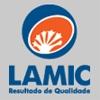






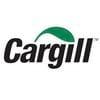





.jpg&w=3840&q=75)
